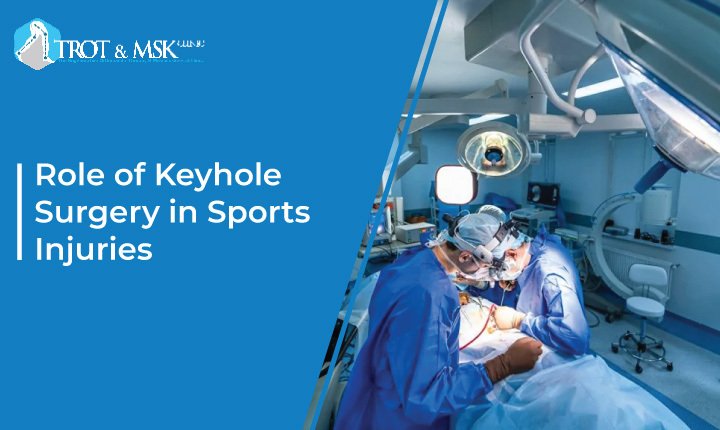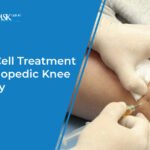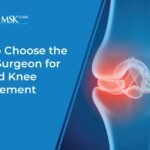An injury sustained while engaging in your favorite activity might be disastrous for a professional athlete. On the other hand, arthroscopy, or keyhole surgery, might hasten and lessen your recovery. Arthroscopy, frequently referred to as “keyhole surgery,” has completely changed how sports injuries are treated. With the use of specialized technology and a small camera, this minimally invasive method can precisely assess and repair joints. Arthroscopy is a vital technique in the therapy of sports injuries, ranging from meniscus damage to rips in the ligaments. Dr. Shohab Hyder Shaikh is a leading expert in Sports Injury Surgery in Karachi, specializing in advanced arthroscopic techniques for effective treatment and recovery. This article will examine its multifaceted function in the management of sports injuries, highlighting its significance in enabling precise diagnosis and efficacious treatment strategies.
Knowing Keyhole Surgery
Need Of Injury
Depending on the severity of the injury, a sports medicine expert may recommend a patient to an orthopedic surgeon for sports surgery if they sustain an injury while working out, playing sports, or indulging in any other physical activity.
Common Clinical Findings
Sprained ankles, hip bursitis, fractures, knee and shoulder injuries, tendonitis, low back discomfort, strained muscles, concussions, and cartilage damage are among the problems that can happen when exercising. Sports medicine physicians may be able to treat these injuries without surgery, but in other circumstances, bone and joint realignment or repair of injured soft tissue may necessitate surgery.
Definition Of Arthroscopy
Arthroscopy, also referred to as keyhole surgery, is a common minimally invasive surgical method for treating sports-related injuries. The process includes diagnosing and treating a variety of joint-related disorders with the use of a small camera (arthroscope) and specialised instruments. Sports injuries are a good candidate for keyhole surgery, which is frequently used for several objectives.
Role Of Arthroscopy In The Field Of Surgery
Diagnostic Tool For Several Injuries
Arthroscopy, also referred to as keyhole surgery, is a common minimally invasive surgical method for treating sports-related injuries. The process includes diagnosing and treating a variety of joint-related disorders with the use of a small camera (arthroscope) and specialised instruments. Sports injuries are a good candidate for keyhole surgery, which is frequently used for several objectives.
Arthroscopic Treatment For Reconstruction Of Tendon And Ligament
Athletes frequently get damage to their ligaments and tendons. In order to allow freshly sutured tendons or ligaments to recover and spontaneously rejoin, surgery usually entails anchoring them to the bones.
Meniscus Tear Repair Treatment
Meniscectomy, meniscus repair, or, in extreme circumstances, meniscus replacement are the available treatment options for meniscus tears. Meniscus repair is only done when the tear is reparable because the goal of surgery is to preserve a healthy meniscus.The goal of meniscus surgery is to preserve the meniscus’s healthy tissue. For a meniscus tear to heal, blood flow is required. Only the outer part of the meniscus has sufficient blood flow to support the healing of tears. Usually, just the outermost segment of this meniscus is fixed.
Meniscus repair is quite successful when done by a skilled surgeon; over 90% of patients have positive outcomes. Arthritis is more likely to develop in any knee injury.
Synovectomy
A synovectomy is a type of surgery where part of a joint’s synovium is removed in order to treat synovitis. Either an arthroscope or an open procedure can be used. The affected joint frequently dictates the surgical strategy that is employed. Joints such as the knee, hip, elbow, wrist, or fingers can all benefit from synoviotectomies, which can greatly enhance function and reduce discomfort.
Joint Debridement
A surgical procedure called arthroscopic debridement is used to remove damaged cartilage and tissues in order to reduce pain and enhance mobility. Most commonly, it is used to help reduce arthritic symptoms so that you can minimise discomfort and restore most of the function of your knee. The primary problem that is addressed with arthroscopic debridement is osteoarthritis.
Conclusion
The application of arthroscopy has significantly changed sports medicine. Thanks to this amazing method, medical experts can now detect and treat joint-related ailments more effectively. Medical professionals can undertake focused therapies with keyhole surgery, such synovitectomies and ligament reconstructions, to help athletes recuperate. For those with sports-related injuries, the minimally invasive aspect of arthroscopy has shown to be quite beneficial in lowering discomfort and regaining functioning. Because of this, arthroscopy has developed into a crucial tool in sports medicine, enabling players to rapidly and safely restore their physical capabilities and resume their sport.







